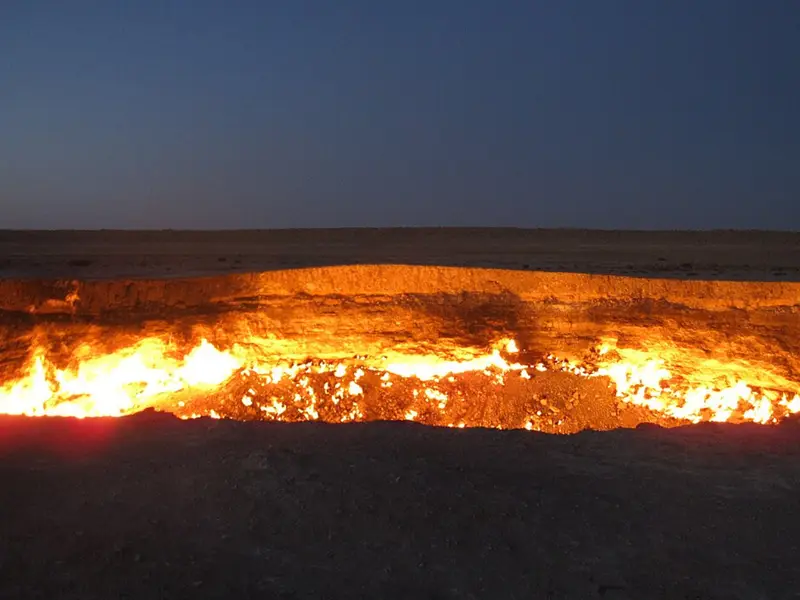Turkmenistan’s infamous “Gateway to Hell” — a gaping fiery crater in the Karakum Desert that has burned nonstop for more than five decades — may finally be nearing its end. Since 1971, the blaze has been consuming methane gas escaping from underground reserves, turning the remote site into both an environmental hazard and an unlikely tourist attraction.
For decades, the authorities left the fire to burn unchecked, partly because of its isolation from populated areas. However, with rising global concerns over greenhouse gas emissions, Turkmenistan is now taking decisive steps to suppress it. The state-owned energy company, Turkmengaz, has drilled capture wells around the crater to trap leaking methane and reduce the intensity of the blaze. According to officials, these measures have already yielded significant progress: the flames, once visible from kilometers away, have dwindled to a faint glow.

Irina Luryeva, a director at Turkmengaz, told an environmental forum in Ashgabat that the crater’s activity has been reduced threefold. “The glow that once dominated the desert night has nearly disappeared,” she said. Officials credit this progress to broader efforts in sustainable energy management and methane mitigation, which also align with Turkmenistan’s economic interest as a leading natural gas exporter.
The origins of the fiery pit lie in a mix of accident and miscalculation. Soviet geologists, drilling in the desert in 1971, ruptured a massive gas pocket. To prevent toxic emissions from spreading, they ignited the leak, expecting it to burn out in a matter of days. Instead, the flames raged on for more than 50 years — a testament to both the abundance of Turkmenistan’s gas reserves and the unintended consequences of short-term fixes.
While extinguishing the “Gateway to Hell” would close a dramatic chapter of geological and political history, it also highlights the environmental urgency behind the decision: unchecked methane emissions remain far more damaging to the atmosphere than carbon dioxide, making this not just a national but a global concern.


